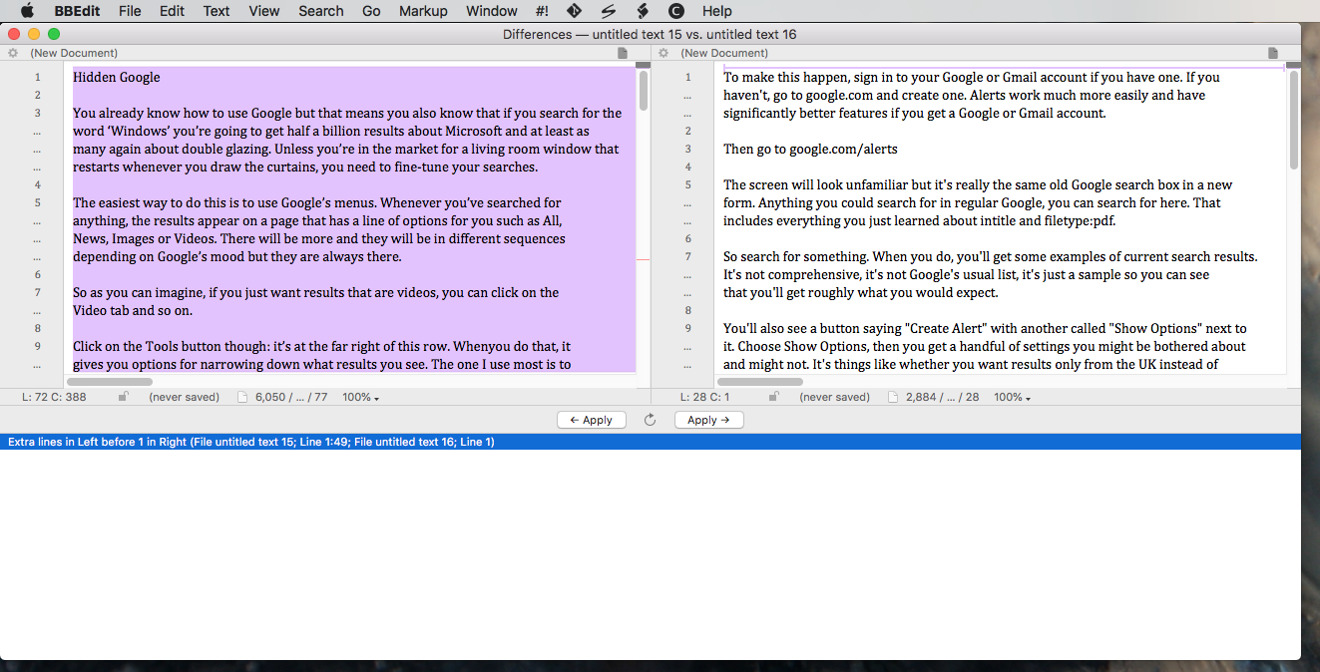

If you have a single full name field, select a cell in that field and press Option-right arrow to add a column after that name column. Jane Doe (first and last in one field) Jane and Doe (first and last in separate fields) Doe, Jane (last name first, a comma, and then the first name)įor formatting and spreadsheet purposes, you decide you want all names divided into a first name and last name field, so you can sort by last name, but use the first name separately when exporting to an email list program.įirst, make sure you have two adjacent fields in Numbers for first and last name. When the trial ends, the app downgrades to a more limited feature set that includes all the find-and-replace options required in this article.)įor instance, say you have data that lists names in the following way:
#Bbedit find and replace install#
Download the standard version and install it, and you have access to all features during a 30-day trial. (The free version of BBEdit has all the features you need. BBEdit labels the find part Grep after a Unix version of regexp. Elements you match in a search can be grouped so that you can rearrange them as part of a text replacement. Regexp is sophisticated, almost a simple programming language. Some apps support wildcards, where you drop in special characters or sequences to match parts of text, like any number (0 to 9) or a full sentence, defined by being between periods and other ending punctuation. I rely on BBEdit to perform advanced wildcard matches called regular expression patching matching (regexp, for short) and to replace data with matched elements.

As long as you retain tabs and hard returns while editing, you can fix up what you pasted in the text editor, copy the revised data, and paste it over the exact area you copied from in Numbers. Numbers lets you copy the contents of any number of cells and then paste them into a text editor.
#Bbedit find and replace manual#
There's a remarkably simple solution that costs nothing and might save a lot of manual re-entry and editing. What you want, however, is normalized data-entries that are structured identically to allow them to be sorted, visually scanned, and organized in other ways. One might split first, last, and middle initial into three fields. Or each part of the data you have formats the name in different ways. You see this most frequently with names, where you receive a list formatted in one fashion-like last name, first name-and you want it another. Numbers will correct many kinds of standard formatting when typed in, but the same data may remain in its original, varied form when pasted in or when you open a CSV (comma-separated value) file, a common export format from other software and from websites. This can come up when you have dates, numbers, or currency values formatted in different ways that are imported or pasted into Numbers. Where Microsoft Word lets you use patterns to match and replace values, you can't make that happen in Numbers, Excel, or Pages. But where it falls short-as does Microsoft Excel-is at cleaning up data that's in the spreadsheet. You can use Apple's Numbers app for sophisticated spreadsheet work.


 0 kommentar(er)
0 kommentar(er)
